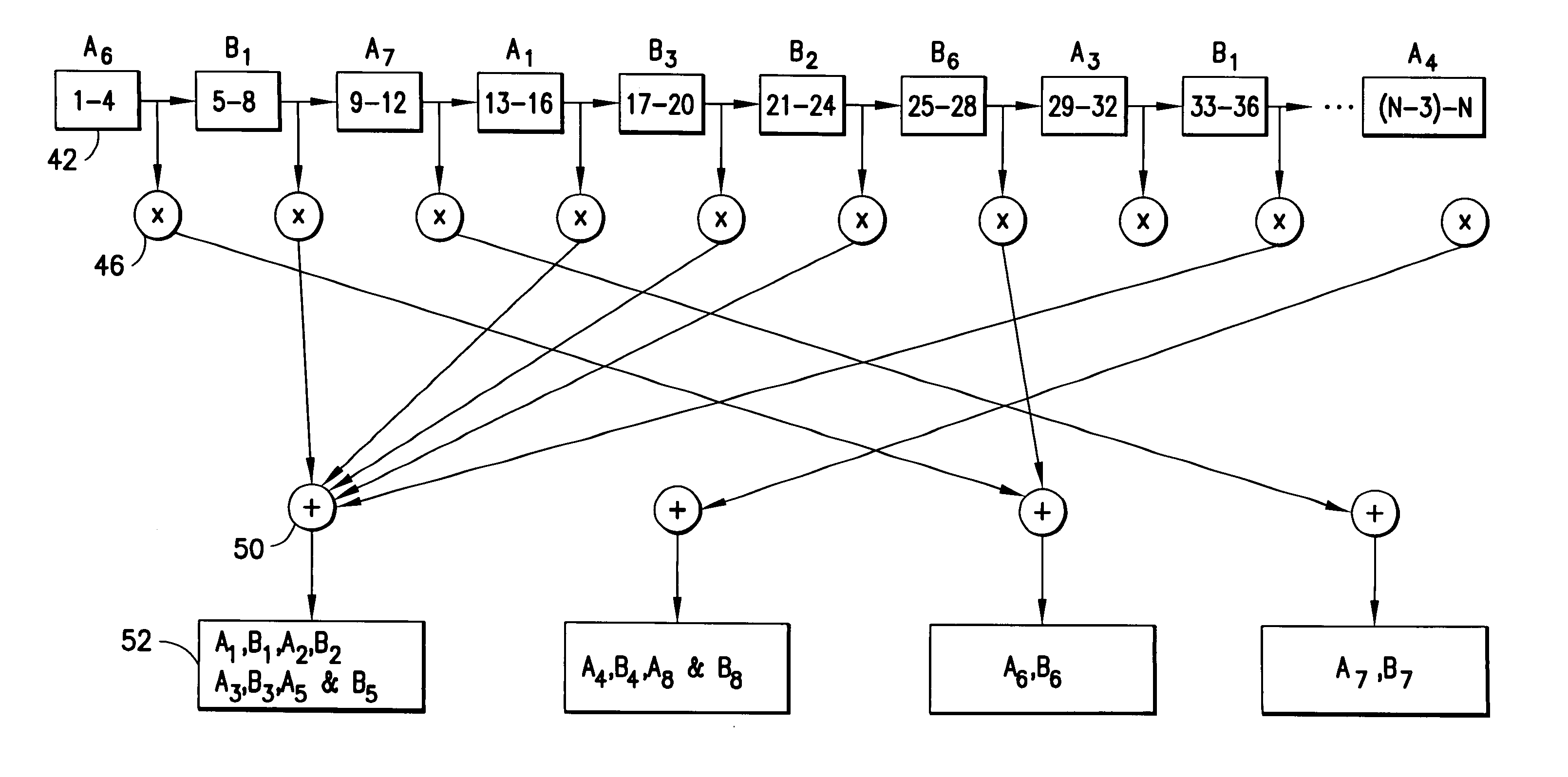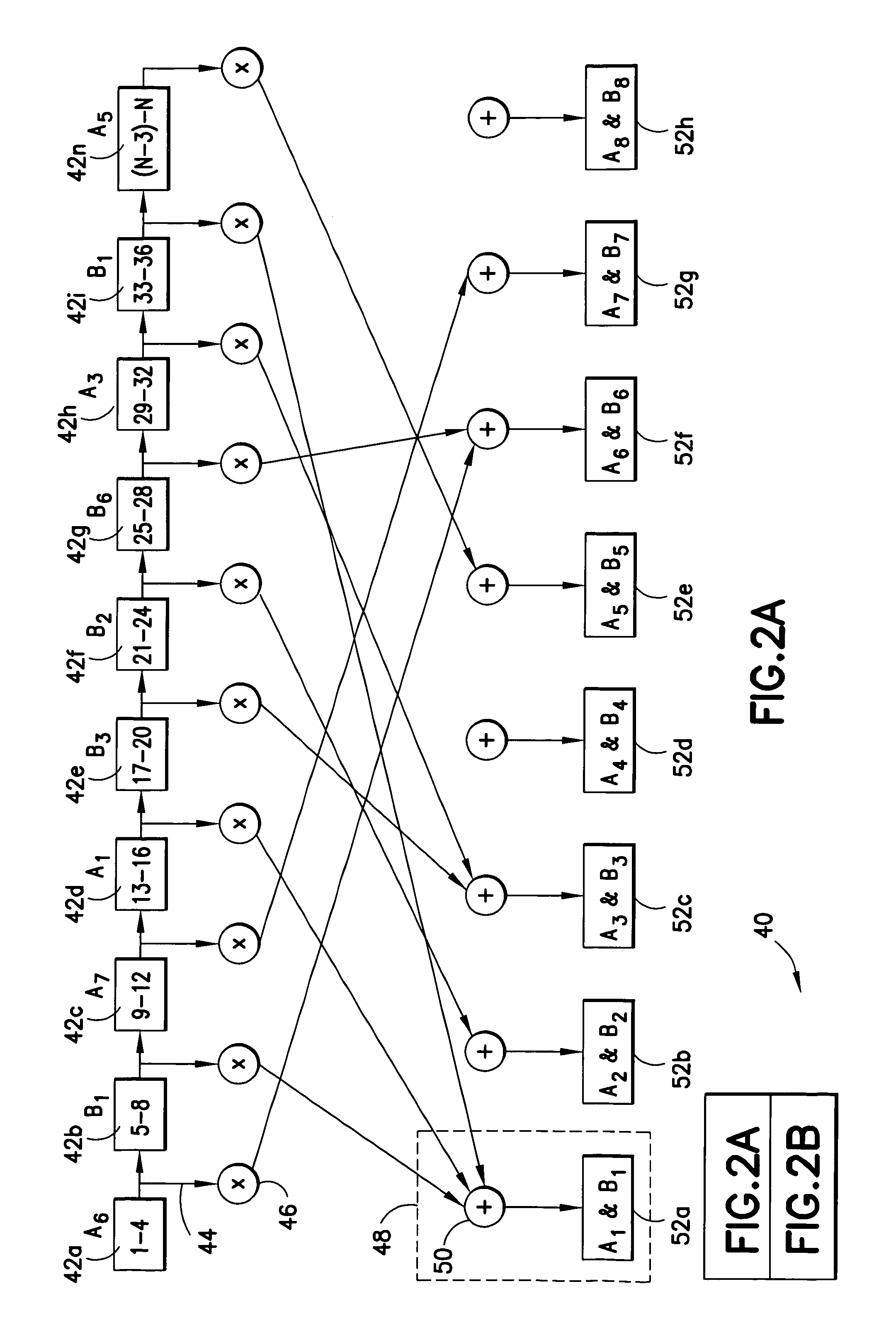Sub-sequence accumulation filter and method
a filter and sub-sequence technology, applied in the field of sub-sequence accumulation filter and method, can solve the problems unable to achieve the correct rate and time offset, etc., to achieve the effect of reducing the number of unique bit-sequences
- Summary
- Abstract
- Description
- Claims
- Application Information
AI Technical Summary
Benefits of technology
Problems solved by technology
Method used
Image
Examples
Embodiment Construction
[0020]Consider a truly random spreading code of length N=40 for ease of illustration, each member being positive or negative one. While the present invention is operable with pseudo-random codes also, its advantage over alternative parallel correlators is most pronounced with random spreading codes. For any sub-sequence of length four within the spreading code, there are a total of exactly sixteen possible values, as shown in Table 1 below.
[0021]
TABLE 1Sixteen Possible Values for any Sub-Sequence of Four Code BitsColumn AColumn BA1 = −1, −1, −1, −1B1 = 1, 1, 1, 1A2 = −1, −1, −1, 1B2 = 1, 1, 1, −1A3 = −1, −1, 1, −1B3 = 1, 1, −1, 1A4 = −1, −1, 1, 1B4 = 1, 1, −1, −1A5 = −1, 1, −1, −1B5 = 1, −1, 1, 1A6 = −1, 1, −1, 1B6 = 1, −1, 1, −1A7 = −1, 1, 1, −1B7 = 1, −1, −1, 1A8 = −1, 1, 1, 1B8 = 1, −1, −1, −1
[0022]The general concept of the present invention is to divide the N-length spreading code into smaller groups or sub-sequences of bits, and sum all similar sub-sequences together. Each sub...
PUM
 Login to View More
Login to View More Abstract
Description
Claims
Application Information
 Login to View More
Login to View More - R&D
- Intellectual Property
- Life Sciences
- Materials
- Tech Scout
- Unparalleled Data Quality
- Higher Quality Content
- 60% Fewer Hallucinations
Browse by: Latest US Patents, China's latest patents, Technical Efficacy Thesaurus, Application Domain, Technology Topic, Popular Technical Reports.
© 2025 PatSnap. All rights reserved.Legal|Privacy policy|Modern Slavery Act Transparency Statement|Sitemap|About US| Contact US: help@patsnap.com



